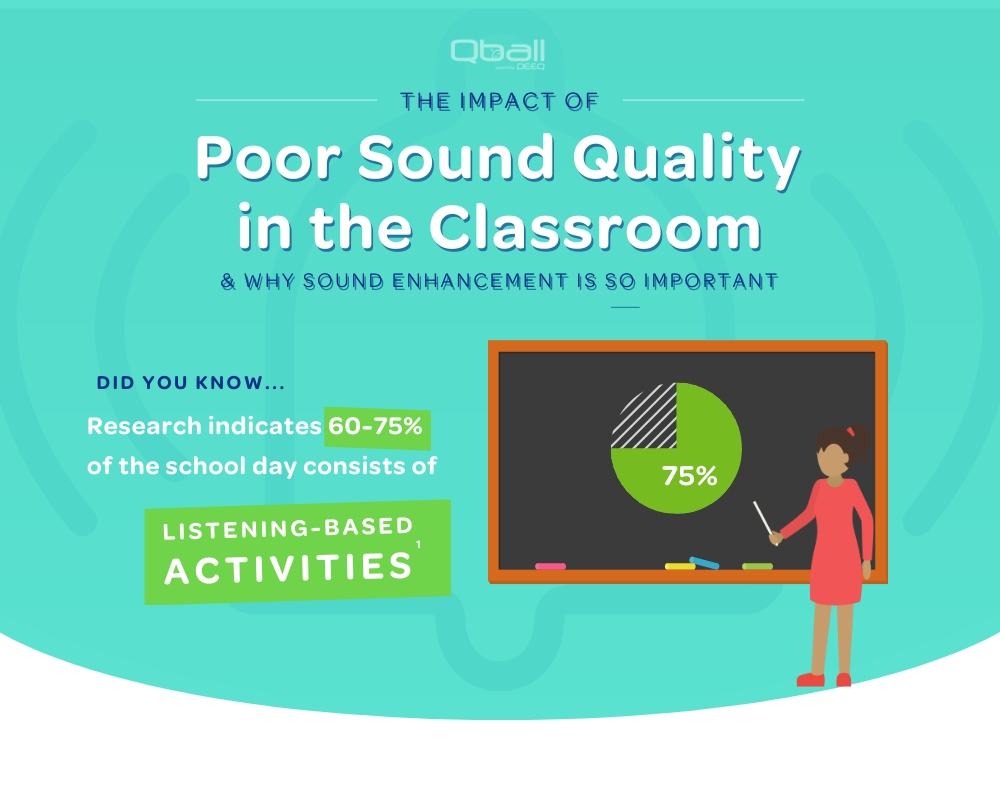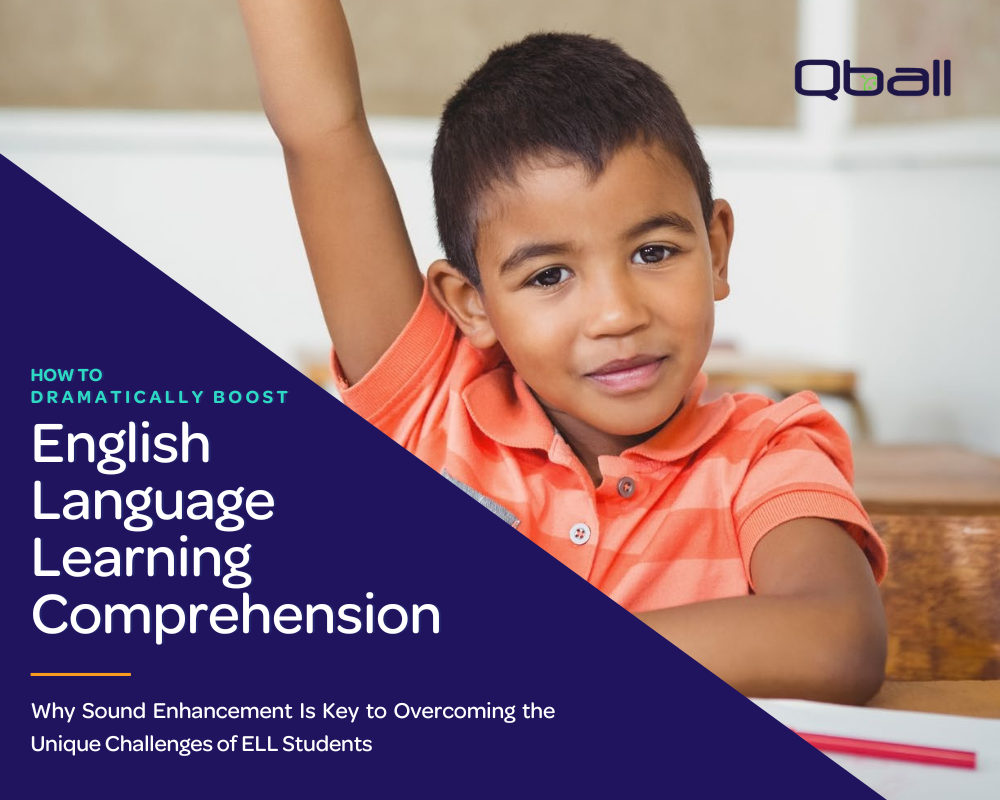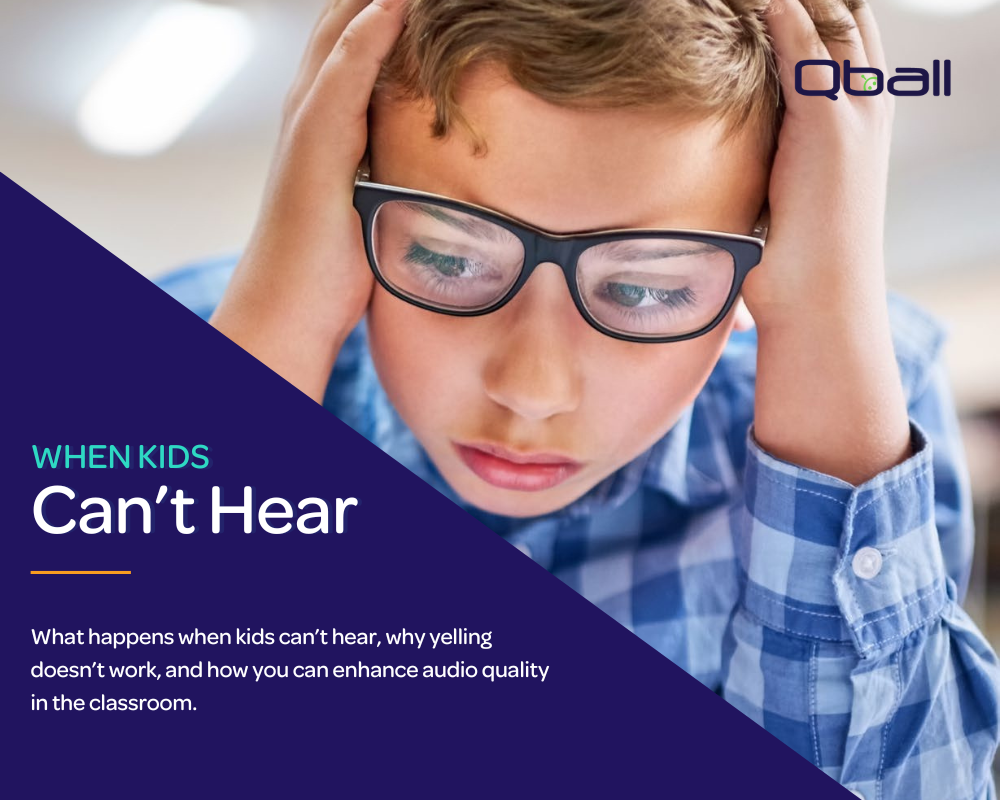Quick Links
Grant Options
There are many grant options available for schools and districts. Here are some of our favorite resources:
Grant Verbiage Library
Summary 1:
The Qball is a progressive, action-oriented learning tool that engages and encourages participation of all students. This technology integrates the Four Cs of Education (Critical Thinking, Communication, Collaboration and Creativity). When using this innovative device students learn skills needed in the 21st Century like clear and articulate communication while working with a team, as an essential skill for our future leaders
Summary 2:
Using the Qball in the classroom engages the whole student body. This interactive project promotes personal interaction and strengthens inclusion. Students use the device to answer open-ended questions, during a guided discussion or to assess students’ knowledge of the common core.
Summary 3:
The purpose of this project is to consistently improve students life ready skills. The Qball initiates expressive communication and collaboration with peers and staff. This device is excellent for social and emotional growth as they interact with one another.
Summary 4:
This project is feedback-based and process-driven. Using the Qball in the classroom setting is an innovative tool to engage students. Students improve and share their understanding of concepts taught.
Goals are statements of educational intention.
When speaking using the Qball:
- Students will be able to enhance students literacy learning when reading out loud.
- Students will be able to recall terms and ideas.
- Students will be able to provide critical thinking concepts when prompted questions to answer.
- Students will be able to identify/ recall vocabulary words with repetition from other students.
- Students will use knowledge of language and its conventions when speaking, reading and listening.
- Students will grasp math concepts when using the device during addition, subtraction and multiplication practice.
- Students will identify elements of a passage for Mclass testing when prompted with questions.
- Students will grasp appropriate articulation with the device’s audio enhancement in Spanish or other language classes.
- Students will amplify their voices during required presentations.
The description should be creative.
Qball provides the classroom with the following:
- Encourages teamwork with group activities.
- Easy for students to classify ideas and communicate.
- Guides students in demonstrating their thinking process.
- Encourages students to make decisions.
- Gives students with special needs a voice to capture strengths.
- Provides choices for students to show what they know.
- Engages readers in thinking and talking about texts through interactive read-alouds.
- Encourages engaging discussions.
- It challenges students to listen to one another.
- Team building exercises to enhance participation.
- Multi-sensory approach with visual and auditory learning.
- Students become perceptive listeners.
Educational assessment is the process of documentation of student’s learning.
A variety of assessment Ideas:
- Data collection throughout the learning process through classroom observations.
- Student feedback on other individuals when using the device.
- Students assess themselves with self reflection when answering questions.
- Informal assessments with either multiple – choice questions, true and false or short answer questions when speaking into the device.
Formative Assessment and Review By letting students toss the Qball around the room, formative assessment and review become instantly more engaging and meaningful. The QBall helps teachers more consistently remember to check-in with what students need and it helps students feel more empowered to approach and tackle content that can otherwise feel intimidating.
21st-Century Skills Learning goes beyond memorizing content. It’s also about emphasizing collaboration, critical thinking, and communication between students, community experts, and teachers. It is clear, as shown in the examples below, that infusing the Qball routinely boosts learner engagement in several of these lifelong skills.
Communication By putting the Qball into students’ hands, teachers can increase student engagement and participation in discussions. This is because the Qball provides a tangible tool that excites students and helps them constructively communicate about tools, processes, and solutions to problems. Students gain communication skills through speaking clearly, using each other’s names, and making eye contact before sending the Qball on. The Qball can also be the perfect tool for students to practice things like expert interviews, answering audience questions, and thinking out loud.
Collaboration Collaboration is emphasized when the Qball is used in both whole group and small group settings. Students get to shake up their groups and support each other’s learning by tossing the Qball to each other in a respectful manner. Teams can use the Qball to share ways they are supporting each other, talk through teammates’ various approaches to solving problems, and provide feedback in specific, relevant ways into the Qball microphone.
Critical Thinking and Reflection With the Qball in their hands, students are encouraged to regularly call out what they are learning and how it can be applied in the classroom and beyond. Students feel motivated to have responses at the ready because they know the Qball could be headed their way. Learners crave the chance to elevate what they need in order to move forward with their learning since they get to speak into the Qball. No matter how you look at it, the Qball serves as motivation for students to stretch their thinking and reflect meaningfully on their learning.
- The Qball is an educational technology tool that increases academic achievement that appeals to multiple learning styles.
- It can be used with S.T.E.A.M; E.S.L.; Special Needs; Pre-K; E.L.A.; Math; Science; Social Studies and Staff Development.
- The Qball is an effective and useful device to practice standard testing requirements.
- Students can practice word recognition. Skills are enhanced with repetition using the Qball.
- Using the Qball microphone to practice testing before standard exams is beneficial
- Using the Qball allows students to answer open ended questions.
- Students gain the ability to hear phonemes to explore speech sound
- Teacher models fluent reading skills using the Qball for students to learn
- Listening Comprehension skills are enhanced with students
- Repetition from peers speaking enhances the learning of language skills
- The microphone enhances sound for the hearing impaired
- It is an excellent self-directed learning tool
- It is a positive behavioral tool
- Aligns perfectly with the positive behavior expectations in a classroom
- An excellent tool for increasing engagement
- It empowers students for good self esteem
- It encourages communication
- An excellent tool to develop interpersonal skills and communication
- Using this method to target and support participation
- A tool to support the integration of social interactions
- It includes movement to enforce flexible seating
- The Qball supports P.T. and O.T. goals
- This tool engages each learner
- It is collaborative creating relationships
- The Qball encourages a growth mindset needed for the 21st Century
- It inspires the class
- The device involves all children with a hands-on activity
- A great way to assess knowledge of the common core concepts
- It enhances social responsibilities to foster healthy relationships
- It encourages to think about feelings and express them to others
- Excellent tool for morning meetings and afternoon reflections
- An amazing tool for presentations so all students can hear
- A fun tool for think-pair and share
- A tool for positive reinforcement used in the classroom setting
- Excellent for expressive and receptive language skills
- A device to support differentiation to involve all levels of ability
- A creative way to reach all students
- Enhances social and emotional learning with a connection with peers
- The Qball empowers students to reach social and emotional growth
- A motivational tool to help students be proactive for responsible growth with academics and social interactions
- An empowering device for students to respond
- Encourages awareness
- Encourages important social skills – sharing and cooperation
- A unique technology tool for students to share knowledge while staying engaged
Qball and Social Emotional Learning
Educators and researchers are quickly realizing that social and emotional learning (SEL) competencies—such as empathy and interpersonal skills—are fundamental to student success, prompting many schools and teachers to look for ways to add discussion-based activities to their lesson plans. But distracting background noise and the fear of embarrassment can discourage some students from participating. Here’s how Qball can help.
Relationship Skills: Communication-Relationship Building According to teachers, “…students are listening to each other more when they use the Qball which is fostering greater communication and interpersonal skills.” The Qball helps students reinforce and practice interpersonal skills such as: ensuring eye contact is made before tossing it, calling out a classmate’s name before passing the Qball, and learning how to provide positive, constructive feedback when responding to peers.
Self-Awareness: Self-Confidence-Self-Efficacy The Qball is an engaging tool designed to excite students and give them the confidence to verbally express their goals, ideas, and what they need in order to be successful. The Qball wireless microphone makes student reflection irresistible!
Social Awareness: Perspective-Taking-Empathy-Respect for Others Morning Meetings are transformed when students get to use the Qball to amplify their voices. They are able to listen deeply to each other because they are able to hear each other so much better. This means learners are able to attend to each task and respect each other when they use the Qball.
Self-Management: Self-Discipline-Impulse Control Imagine a classroom where students are engaged, enthusiastic, and respectful of their peers. The Qball helps teachers make this classroom scenario a reality by encouraging students to roll or toss the Qball to a peer. The Qball becomes a “21st-century talking stick” that harnesses students’ attention and focuses them on the work at hand.
Responsible Decision-Making: Solving Problems- Reflecting The Qball wireless microphone provides a tangible motivator for students. With the Qball in hand, learners are encouraged to analyze situations and discuss ways to solve problems. The Qball gives students a desire to bring and share out multiple solutions to a variety of problems.
Qball and Restorative Classroom Practices With Restorative Practices gaining traction in classrooms, it’s important to see just how the Qball can help bring these important practices to life in the classroom.
Morning Meetings, for example, are shown to engage learners, help them create a toolkit of strategies they can use to solve problems, as well as build positive classroom culture (Responsive Classroom, bit.ly/educational_equity). Since the Qball microphone amplifies student voices it makes it more enticing for students to pay attention to the peer who is talking. Students need to make eye contact with the peer they’d like to toss the Qball to, as well as say the peer’s name before they toss. Each of these intentional steps required by the Qball lay the groundwork necessary to build an ideal culture in any classroom.
Students With Accommodations What can the Qball do for students who need accommodations? Teachers have shared that they, “use it daily,” and that they, “plan specific parts of a lesson especially if the focus is speaking and listening (Life of an EL teacher) but then we use it to share work.” Teachers believe that using the Qball means results like, “My kids speaking scores will improve this year!! When I used it with the first class I was even more excited because my students were all talking! In the ESL world that is a big win!”
The ability to order a variety of covers for the Qball means teachers can address specific uses for content review, formative assessments, and reflections. Changing out the Qball skin gives students visual cues or sentence stems so they can more effectively interact and have targeted responses during whole group or small group discussion, reflections, and formative assessments. Using the Qball in small groups before moving back to a whole group setting builds students’ confidence and gives them important think time so they can respond effectively. This makes the Qball an important tool for scaffolding student learning, benefiting English Language Learners and students in programs such as speech and Special Education.
The interchangeable Qball skins can be a tool that gives learners who are selectively mute or receive speech services the confidence to share their “voice” by pointing to an answer or picture on the Qball skin as an alternative to answering verbally. If sentence stems are being used on the Qball, then students can point to the stem they’d prefer to use and then a peer, teacher, or aide can dictate students’ responses. This gives
students who previously had no voice an opportunity to interact with their peers in meaningful ways.
Teachers are quick to point out that their students who may need extra motivation to share their ideas find that speaking into the Qball gives students’ voices a purpose and that holding the Qball gives them a sense of confidence they don’t have without it. Students with specific speech or language goals are getting to practice in real time with the Qball with the added benefit of also hearing proficient speakers talking.
STEM Engaging deeply with STEM means students are encouraged to take learning out to the world beyond the classroom. Learners must develop problem-solving skills, effectively use the engineering design principles, keep up with ever-evolving technology, and tackle math from multiple angles. Qball is the ideal tool to support this work.
Qball and NGSS Asking Questions Teachers say that “pulling the Qball out immediately gets them motivated and feeling better about pushing through the lesson”. Using the Qball extrinsically motivates students to ask questions about what they know, what they want to know, and the content they are working on.
Planning and Carrying Out Investigations Imagine how much more in-depth students’ investigations can be if they know they will get to communicate their progress and findings into the Qball. There’s something unique about students holding the Qball and hearing their own thoughts and the ideas of peers over the classroom speakers.
Analyzing and Interpreting Data An integral step in analyzing and interpreting data is that students to share out their findings. What better way to motivate and encourage students to communicate their findings, especially for English Learners and quiet students, than to toss around an engaging tool like the Qball?
Engage in Argument from Evidence Rolling the Qball back and forth gives learners motivation to express and communicate their evidence-based findings and arguments. The Qball serves a unique tool for students to use when sharing their points of view and varying results from experiments.
Construct Explanations and Design Solutions When students are excited to about sharing how they’ve made meaning from texts and learning experiences teachers can be sure they’ve reached a deep level of learning. Teachers can quickly and simply engage learners in activities like having students stand in a circle or two lines to share out their ideas, connections, and what they’ve learned. This promotes student focus from beginning to end of each lesson.
Increased Test Scores
- Classrooms scored 10% better on standardized tests when sound enhancement was used (Mainstream Amplification Resource Room Study MARRS).
- 74% of children showed increased standardized test scores in phonological processing with sound enhancement versus 46% in unamplified classrooms (Allcock, 1999).
- Increased test scores were shown to improve using sound enhancement in listening and language skills for Kindergarten students. For grade 2 and 3 scores in the area of math concepts, math computation and reading improved (MARRS)&(Ray, 1992).
Learning and School Benefits
- The study reported significant improvement in ratings of attention, communication, and classroom behavior (Maaie & Dillon, 2006 p.89).
- “Teachers using amplification report improved student attention, fewer distractions, and less need to repeat instructions. Classroom management is enhanced and discipline problems are diminished . . . The evidence for improved teaching and quality of instruction is reflected in the statistically significant gains in reading and language achievement test score” (MARRS).
- “The amplification was found to be more cost effective than supplementary resource room institution in 1. Staff utilization (requiring fewer personnel to achieve the same or superior growth. 2. Lower initial and continuing education costs. 3. Personal costs to students who avoided the stigma, segregation and restriction of special placement” (MARRS).
- Teachers and Principals who use sound enhancement saw improvements in student engagement. Student engagement has been shown to be powerful in education and has been linked to increased academic success (Fredericks, blumenfeld & Paris, 2004).
Qball's Impact
Challenge: Competing with Distractions
"Fans make background noise that makes it difficult for students to hear and pay attention to lessons..."
Challenge: Reluctant ELL Students
"Before using the Qball, I was always seeing the same two or three students participate in classroom discussion..."
Challenge: Poor Participation
"Before the Qball, and on days when I don't have it ready to use, I have the same hands going up during each class..."
Challenge: Teacher Unable to Hear Students
"My students can hear each other when they are giving answers and are much more willing to participate in class discussions when they can use the Qball."
Challenge: Teacher Voice Fatigue
"My voice fatigue is gone. Students are interested in using the device and if not in use, ask where it is. Even the most soft-spoken students can be heard. Amazing product, wish I had it 10 years ago."
Challenge: Poor Engagement and Student Hearing Loss
"My students LOVE it and are always highly engaged in discussions when we use the Qball."



